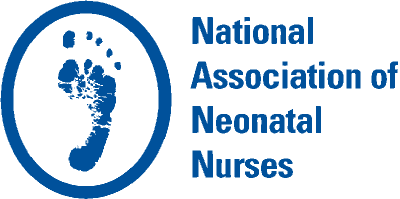Feature
Moral Distress in the NICU
Valarie A. Artigas, DNP APRN NNP-BC

Neonatal nurses give their hearts and souls to each baby and family that they care for. Neonatal nurses are fully aware that along with the triumph and hope for survival, there may also be experiences of profound sadness and morally charged situations. For example, you have cared for the baby with a poor outcome or lethal diagnosis, but the family wants “everything” done, and you speak softly to that little one and hope he or she is not in pain. Or maybe your NICU is short-staffed, or you feel that colleagues are not trained adequately to care for these fragile little lives (Cavaliere, Daly, Dowling, & Montgomery, 2010). Or while you cared for a critically ill term baby, you were also assigned an infant with neonatal abstinence syndrome who was difficult to settle and console.
Neonatal nurses receive advanced training to complement their critical thinking skills while partnering with the technology available in the NICU to provide clinical excellence at the bedside. We understand that the NICU environment itself may cause both physical and psychological stress to nurses (Cricco-Lizza, 2014). Combine the intensity and fragility of life in the NICU, with the scenarios described above, and we become immersed within that gray zone known as “moral distress.”
Andrew Jameton, a philosopher, described and defined moral distress in his published body of work in 1984. Jameton describes moral distress as a “psychological disequilibrium, painful feelings that result from recognizing an ethically appropriate action, but then one fails to take or carry through with that action” (Jameton, 1993, p. 542; Jameton, 1984). Nurses may experience moral distress when they know the ethically correct action to take but feel powerless to take that action. The inability to act may be due to personal or institutional constraints, and in some cases, both are barriers to the nurses’ actions (Allen & Butler, 2016). Neonates represent a vulnerable population; caring for these babies may potentially add a different dimension to NICU nurses’ moral distress (Cavaliere et al., 2010).
Epstein and Hamric (2009) examined the effects of moral distress on nurses and physicians caring for patients in the NICU; their work revealed that if moral distress is not addressed, it is likely to lead to moral residue. Moral residue continues long after the precipitating event that caused the moral distress has occurred or when these precipitating events or scenarios continue to be repeated over time, resulting in the loss of moral integrity (Hamric, 2014; Epstein & Hamric, 2009).
The research to date identifies the following clinical circumstances as some of the prevalent causes of moral distress in the NICU:
- continuation of life support when measures are not in the patient’s best interest
- initiating life-saving measures that merely prolong dying
- inadequate communication about end-of-life care when speaking with families
- providing false hope to parents or caregivers
- difficulty in establishing a clear balance between sensitivity to care and the medical providers responsible for care where the nurse feels he or she has an obligation to advocate on the vulnerable infant’s behalf to protect them from harm
- inadequate staffing or inadequately trained staff in the NICU (Allen & Butler, 2016; Cavinder, 2014; Weigand & Funk, 2012).
Due to the fragility of life seen in the NICU daily, moral distress is recognized as a key issue affecting a “healthy” workplace environment (Thorne, Konikoff, Brown, & Albersheim, 2018). Moral distress exerts a grievous toll on nursing morality and professional integrity. The presence of moral distress among nurses may have negative consequences related to the quality of patient care and the cost of nursing care (Cavaliere et al, 2010). Any physical or perceived barrier recognized by the nurse will interfere with his or her ability to provide safe and nurturing patient care as a result of the presence of moral distress. Cavaliere and colleagues identified that the presence of moral distress may negatively affect patient outcomes.
Moral distress may contribute to feelings of powerlessness, frustration, and dissatisfaction within the workplace, leading to nurses losing their ability to care, avoiding clinical scenarios that have caused them distress, becoming detached from patients, and eventually, suffering burnout. Burnout has led to nurses not only leaving their positions in a healthcare facility but also leaving the nursing profession altogether (Thorne et al, 2018; Fiske, 2018; Allen & Butler, 2016; Cavaliere et al, 2010).
While research has now identified and described moral distress among nurses and other healthcare professionals, one of the gaps noted within the literature is the sporadic exploration of ways to decrease the frequency and intensity of moral distress. In review of the empirical literature, there are strategies utilized to mitigate moral distress; however, more research is warranted. Some of these strategies include development of support networks within care units/healthcare agencies to focus on the interprofessional approach to preserve moral integrity, addressing and eliminating as an institution causes of moral distress that perpetuate distressing barriers of expression and/or patient care, and specifically addressing protocols and formal discussion on end-of-life care issues.
An American Association of Critical-Care Nurses (AACN) position statement released in 2008 identified three levels of stakeholders in which each level is responsible for creating and maintaining healthy work environments. This position statement reflects the importance of maintaining patient safety excellence in patient care outcomes (AACN, 2008; AACN, 2005a).
This statement highlights the following (AACN, 2005b, p. 194):
- “Nurses and all health care professionals need to embrace [their] personal obligation to participate in creating healthy work environments while developing relationships in which individuals hold themselves and others accountable to professional behavior standards.”
- “Healthcare organizations need to adopt and implement standards essential to creating and maintaining healthy environments. The maintenance would require systems to structure education, implementation, and evaluation of those chosen standards within their ability to sustain a healthy workplace.”
- “Professional organizations such as AACN and the community of nursing as a whole must continue to bring national attention to the importance of healthy workplace environments.”
Preservation of a healthy workplace culture will have a safeguarding effect of retaining nurses at the bedside, improving patient care, fostering therapeutic encounters, and decreasing the cost of health care. Public awareness and commitment from organizational and nursing leadership in developing strategies to identify and treat moral distress will protect the moral integrity of nurses. Furthermore, Renter and colleagues (2014) discovered hospitals with Magnet status were found to have positive work environments, decreased staff turnover, collaborative relationships, and provided support to nurses. Be the voice to care and advocate for our beautiful little patients while nurturing our colleagues to heal their souls during those distressing times.
References
Allen, R., & Butler, E. (2016). Addressing moral distress in critical care nurses: A pilot study. International Journal of Critical Care and Emergency Medicine, 2(2), 1-6.
American Association of Critical-Care Nurses. (2005a). AACN standards for establishing and sustaining healthy work environments: A journey to excellence. American Journal of Critical Care, 14(3), 187-197.
American Association of Critical-Care Nurses. (2005b). The 4 A’s to rise above moral distress.
American Association of Critical-Care Nurses. (2008). Position on moral distress.
Cavaliere, T.A., Daly, B., Dowling, D., & Montgomery, K. (2010). Moral Distress in the neonatal intensive unit RN’s. Advances in Neonatal Care, 10(3), 145-156.
Cavinder, C. (2014). The relationships between providing neonatal palliative care and nurses’ moral distress. Advances in Neonatal Care, 14(5), 322-328.
Cricco-Lizza, R. (2014). The need to nurse the nurse: Emotional labor in neonatal intensive care. Qualitative Health Research, 24(5), 615-628.
Epstein, E.G., & Hamric, A.B. (2009). Moral distress, moral residue, and the crescendo effect. Journal of Clinical Ethics, 20(4), 330-342.
Fiske, E. (2018). Nurse stressors and satisfiers in the NICU. Advances in Neonatal Care, 18(4), 276-284.
Hamric, A.B. (2014). A case study of moral distress. Journal of Hospice & Palliative Nursing, 16(8), 457-463.
Jameton, A. (1993). Dilemmas of moral distress: Moral responsibility and nursing practice. Clinical Issues in Perinatal Women’s Health, 4, 542-551.
Jameton. A. (1984). Nursing practice: The ethical issues. Englewood Cliffs, NJ: Prentice Hall.
Renter, M., Allen, A., Thalias, A., & Foley, L. (2014). How Magnet® designation affects nurse retention: An evidence-based research project. American Nurse Today, 9(3), 38-40.
Thorne, S., Konikoff, L., Brown, H., & Albersheim, S. (2018). Navigating the dangerous terrain of moral distress: Understanding response patterns in the NICU. Qualitative Health Research, 28(5), 683-701.
Weigand, D.L., & Funk, M. (2012). Consequences of clinical situations that cause critical care nurses to experience moral distress. Nursing Ethics, 19, 479-487.

